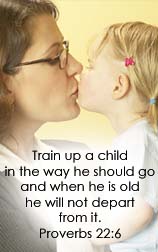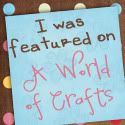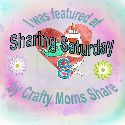- A seasonal round-up (toward the beginning of the month)
- A guest post featuring crafts, activities, tips, snack ideas or other early childhood topics. (toward the end of the month)
- Posts where I share what I have been up to with my preschoolers and/or early elementary children (including occasional highlight posts where I share how we used ideas that have been linked up here on Littles Learning Link Up).
Each week, I will host a link up, where you can share either what you have been up to recently, or old posts that may go with the theme. Feel free to link up more than one post.
Each week I will continue to feature a couple of posts from those that have been linked up.
I hope you will continue to share your wonderful posts, and I hope you will find something new to try with your child.
It would be great for everyone to stop by and visit the other linked-up posts as well. Check them out, leave some comments, pin those that interest you. Let's make this a real party and socialize with each other.It is time for this month's Guest Post:
Today I would like to introduce you to Annette from A Net in Time
"I am Annette. I blog over at A Net In Time.
Loved by God and family - these things center me.
Writer, Poet, Hiker, Reader - these things make me smile.
Educating, Raising a child, Involved with Critters, Pastor's wife - These things make me grow."
Today Annette is sharing a fun hands-on project using crayons to learn about the different kinds of rocks:
Back when my lad was young, we took an afternoon to make Crayon Rocks. It's been about three years now and he STILL has them and talks about how much fun he had doing them.
Ergo, when Karen asked me if I could up a post for her blog focusing on things you can do with young children I was immediately drawn back to that day.
What do you need?
Learning about different types of rocks.
Crayons.
Something to break crayons into slivers.
Aluminium foil.
Heat source.
Water.
Learning and Doing:
Sedimentary rocks
Water carries pieces of broken rock and deposits in a quiet spot. Over time rocks continue to be dropped in that are, building up on layers. These layers are called sediments, the process is called sedimentation. The weight of the upper layers squash the bottom layers in a process called compaction. The process of compaction squeezes the water out of the lower layers leaving different salts behind. Those salts form a glue that cements the pieces of rock together. This process is called cementation. Through sedimentation, compaction and cementation sedimentary rocks are created.
To make a sedimentary crayon rock, take a bunch of your shaved crayons, layering different colours on top of each other. Wrap it tightly in aluminium foil and placed it where you can compress it. We used a table clamp we have.
This is what we ended up with:
Metamorphic Rocks
Metamorphic rocks are made by changing pre-existing rock. This change is made by subjecting a rock to very high heat and pressure. This changes the rock physically and chemically. This pressure and heat can be formed deep inside the earth by pressure from the earth plates (tectonic pressure) or when they heated up by magma from the Earth's interior.
This is how we made our metamorphic rock:
Knowing that this type of rock is made from sedimentary rock, we made a couple different sedimentary rocks. We made boats of aluminum foil. We learned quickly that making a single layer doesn't work very well. The crayon ran out when it started to melt. So we made double, triple and quadruple layer boats.
We floated them in a pot of boiling water (you could also do this in a bowl with really hot water as well if you children haven't learned hot stove safety yet). My son knew how to be safe around a hot stove so we saved that step.
Each layer of thickness slowed down the time that it took for the crayons to start to melt. This is good
to point out to the children as it changes how the rock reforms and how the colours mix and how you
can add pressure to them (or not).
If you make an extra four layer one, wait until it just starts to melt, remove it from the pot and then use
a cloth you don't mind wasting and fold the aluminium foil in half around the melting crayon. Let it
cool and examine the result. It's rather cool. :)
Igneous Rock
Igneous rocks are formed when molten rock solidifies.
To show your children lava, check out this video:
There are two types:
1. Intrusive form below the surface of the earth. The slow cooling allows large crystals to form. Intrusive igneous rock examples are granite and pegmatite.
2. Extrusive form on the surface of the earth. They cool quickly forming small crystals. Some cool so fast they form an amorphous glass. Examples are basalt, obsidian and pumice.
We couldn't make the “underground” type of lava, but I could melt “rock” and then show him how quickly it cools when removed from heat. LEARN from my mistake. . . if using a plastic spoon wrap it much higher up the handle (ours did a lovely bend from melting and was tossed into our sandbox).
Use a spoon that you can easily tip to allow the melted crayon to flow from.
Once it is melted pour slowly so it can start to cool fairly quickly.
My son was quite interested in how uniform the colour was and how some of it had bubbles in it when
it was cool. I showed him pictures of pumice and how it has little holes in it as well.
All in all we had a great time making rocks.
To make this a really complete lesson I would add in pictures or actual samples of these different types of rocks. It's easy to pull up books or images on-line to see samples.
"I am Annette. I blog over at A Net In Time.
Loved by God and family - these things center me.
Writer, Poet, Hiker, Reader - these things make me smile.
Educating, Raising a child, Involved with Critters, Pastor's wife - These things make me grow."
Today Annette is sharing a fun hands-on project using crayons to learn about the different kinds of rocks:
Back when my lad was young, we took an afternoon to make Crayon Rocks. It's been about three years now and he STILL has them and talks about how much fun he had doing them.
Ergo, when Karen asked me if I could up a post for her blog focusing on things you can do with young children I was immediately drawn back to that day.
What do you need?
Learning about different types of rocks.
Crayons.
Something to break crayons into slivers.
Aluminium foil.
Heat source.
Water.
Learning and Doing:
Sedimentary rocks
Water carries pieces of broken rock and deposits in a quiet spot. Over time rocks continue to be dropped in that are, building up on layers. These layers are called sediments, the process is called sedimentation. The weight of the upper layers squash the bottom layers in a process called compaction. The process of compaction squeezes the water out of the lower layers leaving different salts behind. Those salts form a glue that cements the pieces of rock together. This process is called cementation. Through sedimentation, compaction and cementation sedimentary rocks are created.
To make a sedimentary crayon rock, take a bunch of your shaved crayons, layering different colours on top of each other. Wrap it tightly in aluminium foil and placed it where you can compress it. We used a table clamp we have.
This is what we ended up with:
Metamorphic rocks are made by changing pre-existing rock. This change is made by subjecting a rock to very high heat and pressure. This changes the rock physically and chemically. This pressure and heat can be formed deep inside the earth by pressure from the earth plates (tectonic pressure) or when they heated up by magma from the Earth's interior.
This is how we made our metamorphic rock:
Knowing that this type of rock is made from sedimentary rock, we made a couple different sedimentary rocks. We made boats of aluminum foil. We learned quickly that making a single layer doesn't work very well. The crayon ran out when it started to melt. So we made double, triple and quadruple layer boats.
We floated them in a pot of boiling water (you could also do this in a bowl with really hot water as well if you children haven't learned hot stove safety yet). My son knew how to be safe around a hot stove so we saved that step.
Igneous Rock
Igneous rocks are formed when molten rock solidifies.
To show your children lava, check out this video:
There are two types:
1. Intrusive form below the surface of the earth. The slow cooling allows large crystals to form. Intrusive igneous rock examples are granite and pegmatite.
2. Extrusive form on the surface of the earth. They cool quickly forming small crystals. Some cool so fast they form an amorphous glass. Examples are basalt, obsidian and pumice.
We couldn't make the “underground” type of lava, but I could melt “rock” and then show him how quickly it cools when removed from heat. LEARN from my mistake. . . if using a plastic spoon wrap it much higher up the handle (ours did a lovely bend from melting and was tossed into our sandbox).
Use a spoon that you can easily tip to allow the melted crayon to flow from.
All in all we had a great time making rocks.
To make this a really complete lesson I would add in pictures or actual samples of these different types of rocks. It's easy to pull up books or images on-line to see samples.
If you would like to guest post on Littles Learning Link Up, please contact me via email. My email address can be found on my About Me page. I am scheduling posts for the next several months and would love to include yours. I ask that the guest posts focus on subjects relevant for young children (toddler through early elementary). This could be crafts, activities, recipes, or various tips and advice. I am always open to suggestions. Details will be emailed to those who are interested.
Now Onto:
Littles Learning Link Up Features
On my last Littles Learning Link Up post, there were 23 wonderful posts linked up. I will be picking one randomly selected post to share, plus the top clicked-on post.
Don't forget to stop by other posts that are linked up. See what catches your eye, stop by, pin the post to a relevant board, and perhaps leave a comment to let the author of the blog know you have been by for a visit. I know I appreciate others commenting and letting me know they have read my posts, so I am sure others do too.
This week's randomly selected post is:
Annette from In All You Do shared Star Adventures Mini Puzzle Unit.
And here is this week's most clicked on post:
Use Resources Wisely shared 14 Last-Minute Earth Day Ideas For Your Troop.
Join the Party!
I would love to have you join in this week! What sort of activities do you do with your young children? Do you have some favorite activities you would like to share? I invite you to link up below. I will be pinning posts on my Toddler Ideas or other relevant board, and I would love to feature some of the activities each week from what is linked up.
Please know I may share a picture from your post and link back to it, along with sharing how we used your idea in our school time. By linking up you are giving me permission to use a picture from your post. I will ALWAYS give credit and link back. Additionally, if you choose to try out any of the ideas with your child, please make sure you give credit where credit is due.
Linky will be open through Sunday night, to give me time to check out all the posts and get the Features organized. Please take the time to visit some of the other wonderful posts linked up.
Please know I may share a picture from your post and link back to it, along with sharing how we used your idea in our school time. By linking up you are giving me permission to use a picture from your post. I will ALWAYS give credit and link back. Additionally, if you choose to try out any of the ideas with your child, please make sure you give credit where credit is due.
Linky will be open through Sunday night, to give me time to check out all the posts and get the Features organized. Please take the time to visit some of the other wonderful posts linked up.





































![[PREMIO2009.png]](https://blogger.googleusercontent.com/img/b/R29vZ2xl/AVvXsEjXD_Gx-wZ9EM5hXKrEYLksEBkYfRQtmb8VDVTDG_yyLggQoFIstZsh4zszdG20KqErZicRzEhiNYLty7j3IMXJYsABqkXjr8pp-ncj71xCbpxlXGbGpZq2fTuDQqq1RMKV4DPcDBnBViA/s1600/PREMIO2009.png)




I love your rock activities! Pinned so that we can try them out ourselves next year when we study Geology again!
ReplyDeleteThis looks like a fun way to teach kids about rocks! Thanks for hosting. Have a terrific week.
ReplyDeletethanks for hosting me Karen. It was a pleasure! :)
ReplyDelete